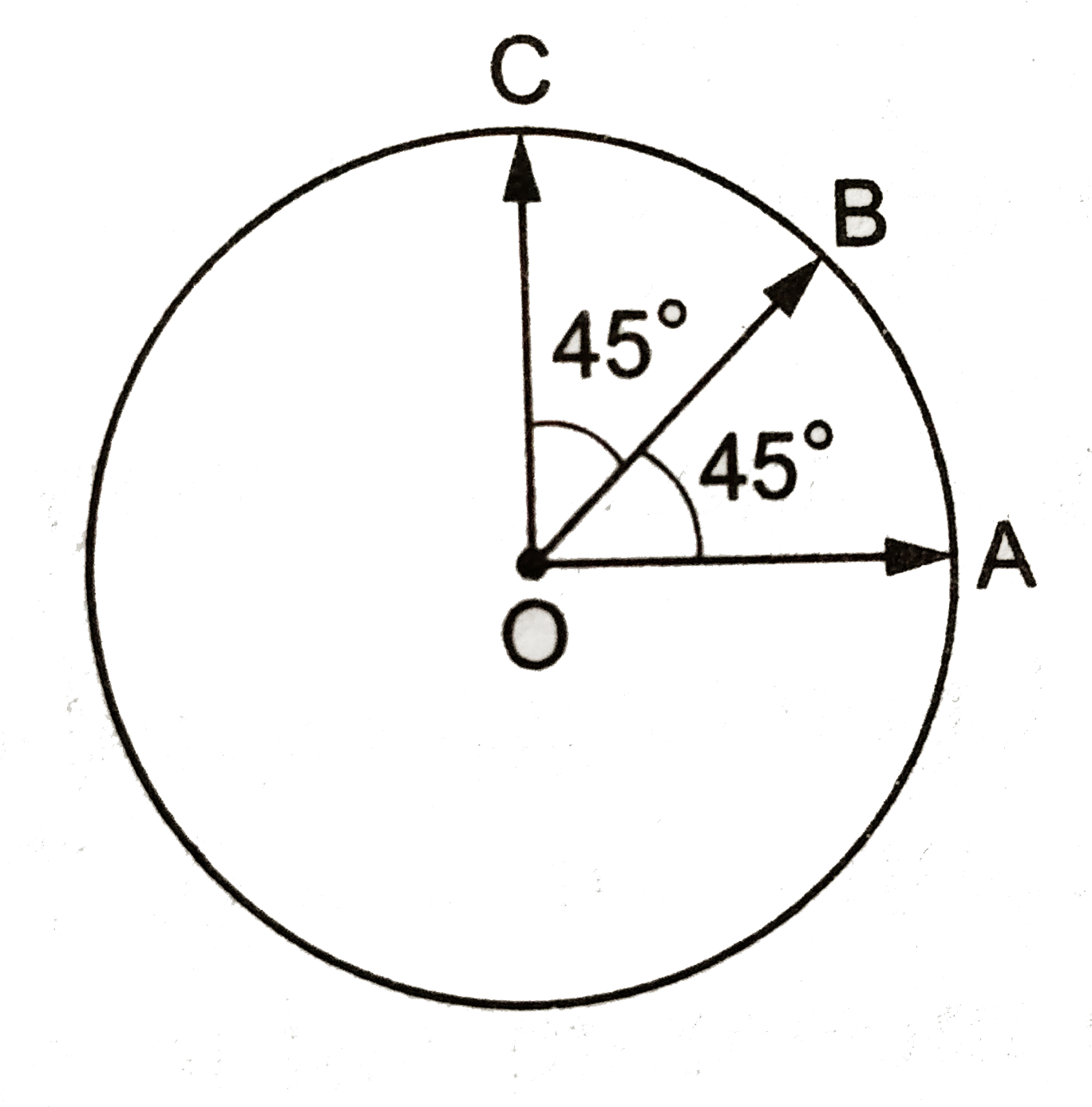The magnitude of vectors −−→OA,−−→OBand−−→OC in figure are equal. Find the direction of −−→OA+−−→OB−−−→OC.
 .Solution in Gujrati
.Solution in Gujrati
Let OA=OB=OC=F.
x - component of −−→OA=Fcos300=F√32
x-component of −−→OB=Fcos600=F2
x−compo≠ntofvec(OC)=F cos 135^0= - F/sqrt2<br>x-component of −−→OA+−−→OB−−−→OC
−(F√32)+(F2)+(−F√2)
=F2(√3+1+√2).
y-component of −−→OA=Fcos600=F2
y- component of −−→OB=Fcos1500=(F√32
y- component of −−→OC=Fcos450=F√2.
y-component of −−→OA+−−→OB+−−→OC
=(F2)(√3+1+√2)
y-component of −−→OA=Fcos600=F2
y-component of −−→OC=Fcos450=F√2
y-component of −−→OA+−−→OB+−−→OC
=(F2)+(−F√32−(F√2)
=F/2 (1-sqrt3-sqrt2)<br>Ang≤ofvec(OA)+vec(OB)-vec(OC)withtheX−aξs<br>=tan^-1 (F/2 (1-sqrt3-sqrt2))/(F/2 (1+sqrt3+sqrt2))= tan^-1 (1-sqrt3-sqrt2)/(1+sqrt3+sqrt2)
Similar Questions
Find the resultant of the vectors −−→OA,−−→OB,−−→OC as shown in figure. The radius of the circle is r.
View SolutionThe magnitude of vectors −−→OA,−−→OBand−−→OC in figure are equal. Find the direction of −−→OA+−−→OB−−−→OC.
 .
.
View SolutionFind the resultant of the three vectors −−→OA,−−→OB and −−→OC shown in figure. Radius of the circle is R.

View SolutionFind the resultant of the vectors −−→OA,−−→OB,−−→OC as shown in figure. The radius of the circle is r.
View SolutionFind the resultant of the three vectors −−→OA,−−→OB and −−→OC shown in figure. Radius of the circle is R.

View SolutionFind the resultant of the three vectors −−→OA,−−→OB and −−→OC shown in figure. Radius of the circle is R.

View SolutionProve that 3−−→OD+−−→DA+−−→DB+−−→DC is equal to −−→OA+−−→OB+−−→OC.
View SolutionIf OAB is a tetrahedron with edges and ˆp,ˆq,ˆr are unit vectors along bisectors of
−−→OA,−−→OB:−−→OB,−−→OC:−−→OC,−−→OA respectively and ˆa=−−→OA∣∣∣−−→OA∣∣∣,→b=−−→OB∣∣∣−−→OB∣∣∣,→c=−−→OC∣∣∣−−→OC∣∣∣, then :
View Solution